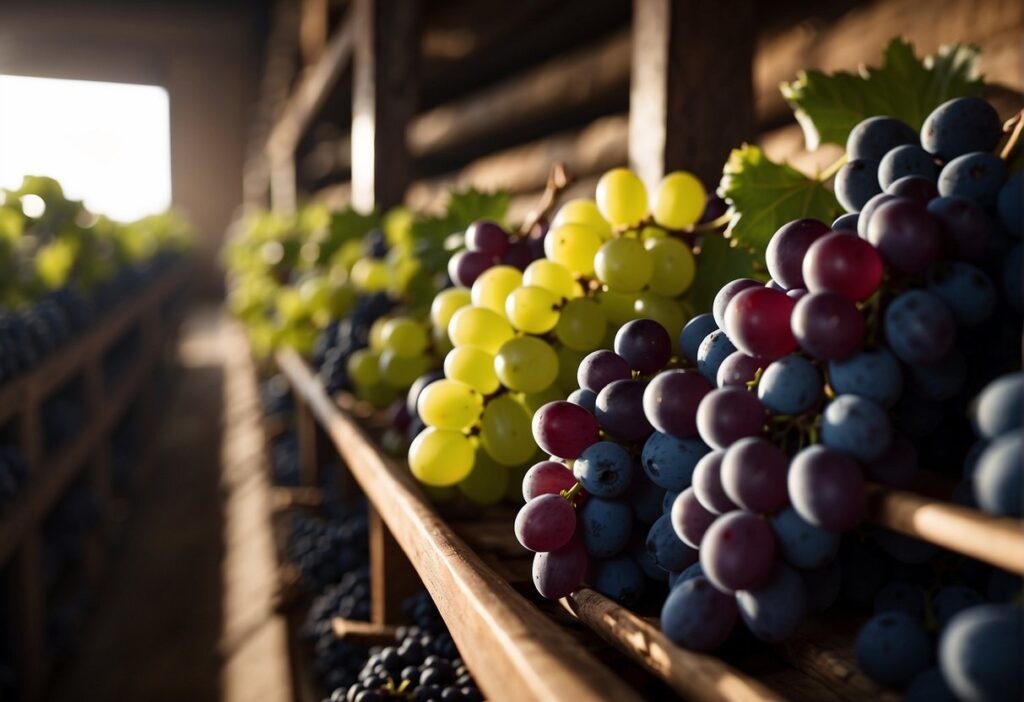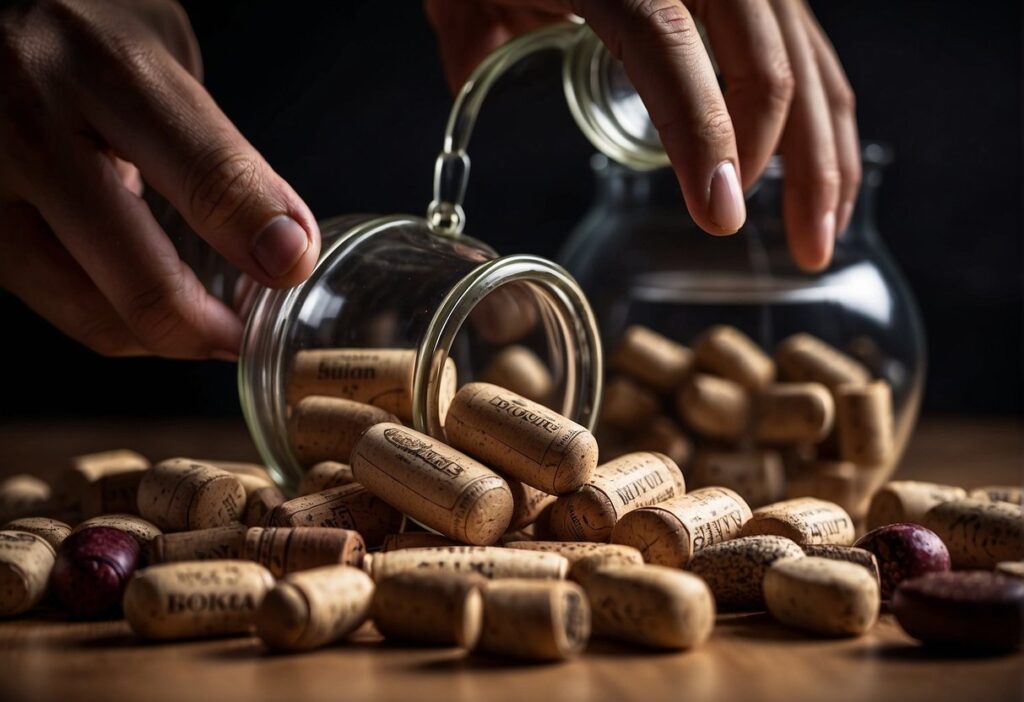Embarking on the journey of wine collecting can be as enriching as it is delightful. It’s a hobby that allows you to enjoy your passion for wine and create a personalized array of bottles. You can savor these over time or share them on special occasions.
As you explore the world of wine, your collection becomes a reflection of your taste. It’s also a testament to your dedication to learning about the various regions, grapes, and processes that make each bottle unique.

To start your collection, consider what you enjoy, the space you have available, and think about the wines that might pique your curiosity over the years.
Wine collecting isn’t solely for those with underground cellars or large budgets. It’s about making smart choices that align with your personal enjoyment and the pleasure of growth.
With each addition, your collection gradually becomes a gallery of your wine exploration and experiences. Remember, proper storage is essential to ensure your wine matures gracefully, and documentation helps you manage your inventory effectively.
Wine collecting is a dynamic and ever-evolving process of discovery. So, immerse yourself in the culture, attend tastings, and connect with fellow enthusiasts to keep learning.
Key Takeaways
- Build a collection reflective of your personal taste and passion for wine.
- Ensure proper management and storage of your collection for best maturity.
- Continuously learn and derive pleasure from every aspect of your wine collecting journey.
Getting Started
In the world of wine, collecting can be a delightful journey into flavors and regions. Get ready to dive into the nuances of wine collecting and learn how to set up a space that preserves the essence of every bottle.
Understanding Wine Collecting Basics
Wine collecting is more than just acquiring bottles; it’s about understanding the investment and enjoyment that comes with aging fine wines.
Each bottle in your wine collection can potentially gain value and complexity over time. To begin, familiarize yourself with the types of wines that age well.
For example, Bordeaux is a type of wine that can develop new flavors and aromas as years go by. It’s essential to learn about vintages and wine regions, as these are critical to selecting wines with aging potential.
Setting Up Your Wine Cellar
Your wine cellar is crucial in preserving the quality of your collection. Start by finding a space with consistent temperature, ideally between 45 to 65 degrees Fahrenheit, as fluctuations can damage the wine.
Ensure your cellar has proper storage like wine racks that prevent bottles from moving too much. Additionally, protect your wines from direct sunlight, which can degrade wine over time. A cool, dark, and slightly humid environment makes for an ideal wine storage solution.
Determining Your Budget and Goals
Decide on your budget for your wine collection, which will guide many of your initial decisions.
Are you collecting for personal enjoyment, or do you view your collection as a long-term investment? Your goals will influence the types of wine you purchase, how much you spend on storage solutions, and how you go about expanding your collection.
Keep in mind that you don’t have to spend a fortune. You can start a modest collection and grow it as your knowledge and budget increase.
Curating Your Collection
In building your wine collection, focus on quality and diversity. Your selections should reflect both personal taste and investment potential for long-term storage.
Selecting Wines for Long-Term Storage
When you’re choosing wines to age, consider factors such as tannin levels, acidity, and sugar content. These characteristics help wines mature well.
For example, a Bordeaux with high tannins or a Riesling with a balance of sugar and acidity can be excellent choices for aging. Ensure you have the right storage conditions, maintaining a temperature around 55°F and humidity levels between 60% and 80% to preserve your wines effectively.
Exploring Different Wine Regions and Varieties
Broaden your collection by exploring wines from renowned wine regions and incorporating different grape varieties.
Consider the classic regions like Burgundy for Pinot Noir, Champagne for sparkling wines, and Barolo for Nebbiolo. At the same time, don’t overlook lesser-known regions or grapes that offer unique flavors, such as Chenin Blanc from the Loire Valley or Tempranillo from Spain.
Age-Worthy Wines and Vintage Selection
Identifying age-worthy wines is crucial for a serious collection. Research vintages that have the potential to improve with age.
Typically, Cabernet Sauvignon, Merlot, and even Sangiovese have proven to age gracefully. Check wine reviews and vintage charts to distinguish between years that produced wines with age-worthy characteristics in your preferred types of wine, be it red wine or white wine.
Managing and Accessing Your Collection

Effective management and access to your wine collection ensure that you can enjoy each bottle at its peak and reassess your investment as needed. Whether you’re savoring a glass or strategizing for future profit, staying organized is key.
Organizing and Documenting Your Collection
Begin by meticulously documenting each wine in your collection. A spreadsheet or a specialized wine inventory app can be invaluable tools. Ensure to record:
- Wine Name: The producer and wine label.
- Vintage: Year of production.
- Quality Marks: Ratings or personal tasting notes.
- Purchase Details: Price and vendor.
- Storage Location: Precise spot in your wine fridge or cellar.
Use a Coravin system to access and taste your wines without pulling the cork, preserving their quality and longevity.
Investment Strategies: Buying and Selling
When buying wine for investment, research is paramount. Seek out rare wines with high appreciation potential. Store them in a high-quality wine fridge to maintain optimal conditions. Keep an eye on:
- Market Trends: Which wines or regions are gaining interest.
- Auction Prices: For an idea of what your wines may yield.
For selling wine, establish connections with reputable wine businesses that facilitate sales or auctions. This can provide you access to a broader market to sell your prized bottles.
Learning and Enjoyment

Embarking on a wine collecting journey can be as enjoyable as it is educational. Wine clubs and tastings offer you a direct path to expanding your knowledge while savoring new flavors.
Joining a Wine Club and Attending Tastings
Joining a wine club is a great way to dive into wine collecting. Members receive handpicked bottles, often tailored to their preferences, allowing for a consistent and guided discovery of new wines.
You’ll gain access to exclusive wine tastings, where you can meet fellow wine enthusiasts and learn directly from sommeliers.
These experiences provide insights into the subtleties of each bottle and can help you identify which collectible wines might be worthy additions to your collection.
The Role of Wine Tastings and Education
Wine tastings play a critical role in your education as an aspiring wine collector. They offer you the opportunity to sample a variety of wines side-by-side, which is invaluable for appreciating the nuances between them.
Through these tastings, you can also pick up the lingo used by wine enthusiasts and learn about different aspects of wine, from vineyard practices to aging potential.
Education doesn’t end at the tastings; many clubs provide informational material, helping you to understand the stories behind each bottle, thus adding a layer of depth to your enjoyment.
Advanced Collecting

Venturing into advanced wine collecting means dealing with more than just labels and bottles. You’ll also need to navigate a dynamic market and build relationships that influence your collection’s diversity and value.
Following Wine Markets and Auctions
Wine markets and auctions are pivotal if you’re seeking to procure rare wines and expensive vintages as part of your investment.
Stay informed about price trends on platforms like Liv-ex. They provide valuable insights into the fine wine market’s performance.
Be attentive to the origin and terroir. These factors can affect wine’s future value and its unique flavors and aromas.
Additionally, recognize that old wine is not always better wine. Ideal wine aging potential is essential for a promising investment.
- Understand that rare wines often come from renowned producers with a significant history.
- Monitor auction sites for opportunities to buy vintages that are expected to increase in value.
Building Relationships with Wineries and Merchants
Establishing connections with wineries and merchants can drastically enhance the quality and value of your collection.
A strong rapport with a wine shop or merchant can grant you access to limited-release vintages. Meanwhile, being in good standing with the producers or brands directly could offer exclusive opportunities to purchase new releases ahead of the public.
- Connect with local and international merchants to expand your inventory with diverse offerings.
- Read magazines and attend tastings to discover emerging wineries and befriend the minds behind them.
Conclusion

Starting your wine collection can be one of the most satisfying aspects of exploring wine as a hobby. By engaging with this activity, you’ve not only developed a passion but also a means for personal enjoyment and potentially sharing experiences with friends and loved ones.
When selecting wines, consider diversity and think about including:
- Different regions
- Varieties of grapes
- A range of vintage years
Remember, a proper storage environment is key to maintaining the quality of your collection.
Options vary from simple wine racks to sophisticated, temperature-controlled wine cellars.
Wine collecting should be fun and reflective of your tastes.
Regularly taste and explore new wines to potentially add to your collection. Doing so will ensure a dynamic and exciting assortment that truly represents your personal journey through wine.
Whether you’re in it for the long haul, aiming to acquire rare vintages, or you’re enjoying the process of learning and exploring through collecting, always trust your palate and collect what you love. This is your hobby, your collection, and ultimately, your adventure in the vast, enriching world of wine.

